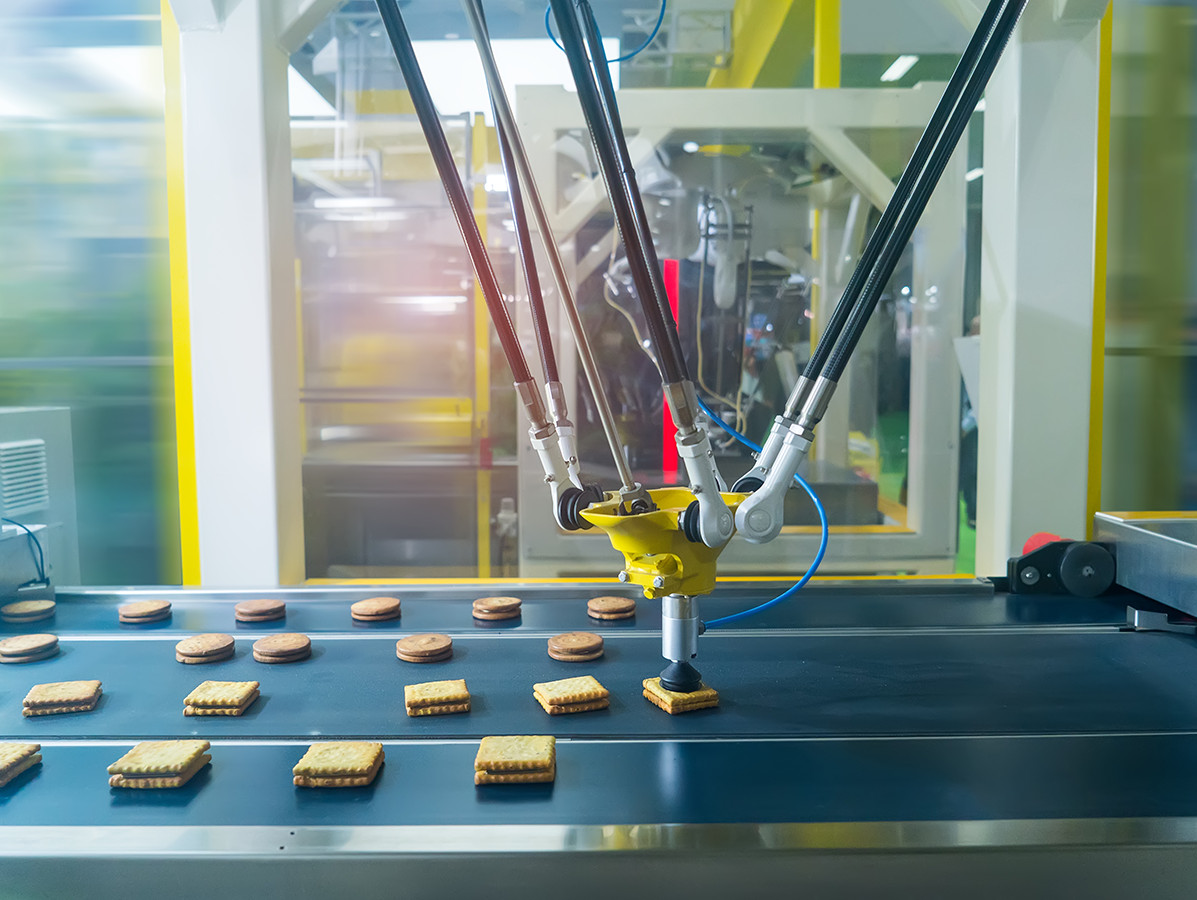
In the food industry we are often sidelined by stubborn equipment, faltering logistics or insufficient digital technology. There has to be a better way. Johan van Holland form Innius, Paul Bakker from Fanuc Benlux and Guido Maßmannn form AVO herbs and spices, talk about it.
At the end of August, the Scientific Council for Government Policy WRR published the report ‘Prepare for digital disruption’. The starting point is the observation that disruption, cyberattacks on and the failure of digital infrastructure can have major consequences for the economy, society and the trust in our democracy. Add the damage on the digital infrastructure due to human error, broken servers, software problems and external factors such as cable fractures or power failures, and you will realise that this can mean enormous consequences for your business. The better you apply digital technology in the processes, the less cracks in the cable, at every level. Many companies can still make big steps in this respect.
Both Fanuc Benelux and Innius receive may questions from the industry about responsible and food safe automation. People want process improvement based on data, says Johan van Holland, Sales Manager at Innius. Innius delivers SaaS (Software as a Service). “Costumers expect us to continuously adjust to new possibilities and safety requirements. Ultimately, they want ‘more for less’, more turnover and efficiency against lower (maintenance)costs, less waste and machine downtime. Depending on the company, this can be done in different ways and with different applications. It’s about breaking down the walls between operational technology (OT) and information technology (IT). Banks have been doing great for years. A lot of other companies still have a long way to go.”
The German company AVO herbs and spices is trying to be at the forefront of the digital transformation, says company leader Guido Maßmann. “Our customers expect high product quality and on-time delivery. A state-of-the-art digital base is therefore extremely important. Especially in production and logistics, we use the latest technology to make processes increasingly effective and efficient. We supply approximately 8,000 articles based on 5,000 recipes. Many of which are client-specific. They developed jointly; with large retailers but also with SME’s. Think of herbal mixes and components, marinades and herb sauces, and necessary additives for optimal and safe food production. This isn’t possible without big data.”
AVO's new logistics centre is located next to the existing factory near Osnabrück and is as good as finished. An investment of forty million euros, with 20,000 pallet spaces operated fully automatically, as well as the warehouse with almost 50,000 storage spaces for Euronorm stacking bins. Guido Maßmann: "Production has been using self-propelled, laser-guided industrial trucks to weigh components automatically for many years. They are controlled per production on the basis of recipes".
Anyone who builds or purchases new machines can no longer ignore big data, confirms Johan van Holland (Innius). "Machine builders must lead the way and manufacturers will lease more often. They expect their machines to be updated and adapted. Nevertheless, even manufacturers with twenty-year-old machines can work in a modern and safe way. Take Hollandia, who partly digitized her 1918 matzes machine".
Industry and high-tech-developers are clearly thinking alike: digitisation serves to optimise and increase security. The more automated it is, the less chance at faltering and disruption. This requires constant innovation. Paul Bakker, Area Sales Manager Robotics at Fanuc Benelux: “Food companies usually continue operation on weekends with multiple shifts. In addition to good support, an excellent service device is of undeniable importance.”
Johan van Holland: “Manufacturers want instruments to predict when maintenance is due for vulnerable machine parts. Others want to measure variables such as humidity, raw material composition and ambient temperature. When you know which configuration from parameters gives the best production result, you are able to control it better. Even just one percent improvement can result in huge cost savings. As soon as you work with data instead of assumptions, you will get accurately analysed results and solutions.”

“More and more people are thinking of PC (Personal Computer) and PLC (Programmable Logic Controller) related solutions”, continues Paul Bakker (Fanuc). “End-users want to be able to easily adept the programs themselves. Recently we presented a CRX robot where one can easily write a program. There is also extra care for safety; after all, you don’t want a cobot to perform an unintended movement. For this purpose ISO 15066 was created. Nowadays there are more and more cooperation’s between human and robot, collaborative robots, something we have been working on for years. Our latest cobots have a high IP-rating, making them extremely safe. The staff needs to be able to work with them, of course. When producing digitally at night, you need all hands on deck for control and logistics during the day. Instead of old fashioned box filling, staff needs to retrain themselves to stay up to date and work in the 4.0 industry.”
Fanuc’s customers, most of them machine builders that use the specialized knowledge of the company, want food-safe robots: with food-safe fat in the joints, moisture-resistant finishes, etc. “They also ask for ADD, our integrated iR-Vision, line-tracking; necessary in a completed application-integration. Anothertrend is that everything needs to be faster and faster. Recently we introduced the Scara-robots; 4-axis robots realizing high speed picking up to 115 picks per minute.”
Johan van Holland confirms the importance of speed; also in analyses. “Digitization needs to be profitable. Something like that does not require an enormous amount of study. Start with a existing problem, learn what insights data can provide and above all: convert knowledge into action. That’s how you grow. The food industry is still at the beginning of digitization. But things can move very fast. Eventually we have to move to connectivity and sharing data: with customers, suppliers and even competitors.”
Guido Maßmann explains that especially the connectivity, the modern way of networking, is the most important reason for AVO to digitize quickly and extensively: “We maintain intensive contact with our customers about product development, production itself and logistics. The requirements for individual products and product quality are changing rapidly. The corona pandemic shows us once again that digital transformation of processes and structures needs to be accelerated; in administration, marketing, sales and service.” Another important aspect is sustainability. “By digitizing processes, we can deploy and use our resources optimally. This is also necessary to make sustainable economic activity possible.”
What will the future bring us? Johan is optimistic: “Look at the revolution that the smartphone started and what has changed in the world of photography, music, banking, shopping, navigating and communicating. There are numerous applications. This is the road that the food-industry will also take. The classic road from producer to consumer will transform into an ecosystem. This requires a different kind of connectivity. We will have to wait and see. But the producer has to make sure to become a vital junction within this ecosystem. Those who don’t have digitization on the agenda, are in for a tough break.”
Guido Maßmann (AVO) concludes: “The digital transformation encompasses the whole company with all its domains. It’s not a project! Permanent digitisation is a central task for any company, a prerequisite for its future success.”
Main Photo: ©PopTika/shutterstock.com, Photo data: ©metamorworks/shutterstock.com
Source: Vakblad Voedingsindustrie 2020